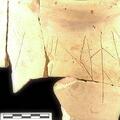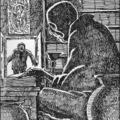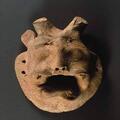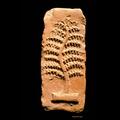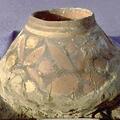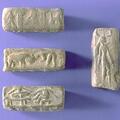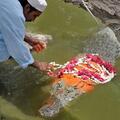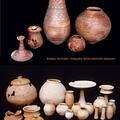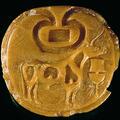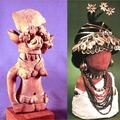Storage Jar with Script
Many large storage jars of the (Period 3) Harappa Phase (2600-1900 BCE) have writing inscribed along the upper portion of the vessel. This inscription includes a figure of a man with the bow and arrow sign in each hand. It is impossible to shoot two bows and arrows at the same time so this is clearly not a pictograph, but rather a combined symbol used as part of a Indus writing system.
See also The Evolution of Indus Script.

